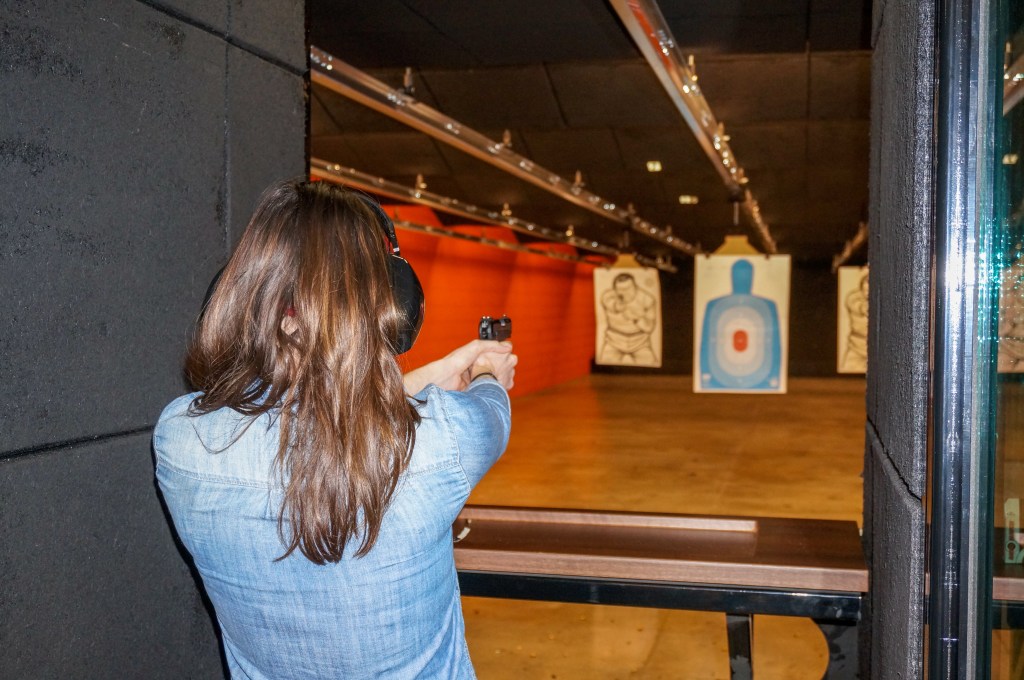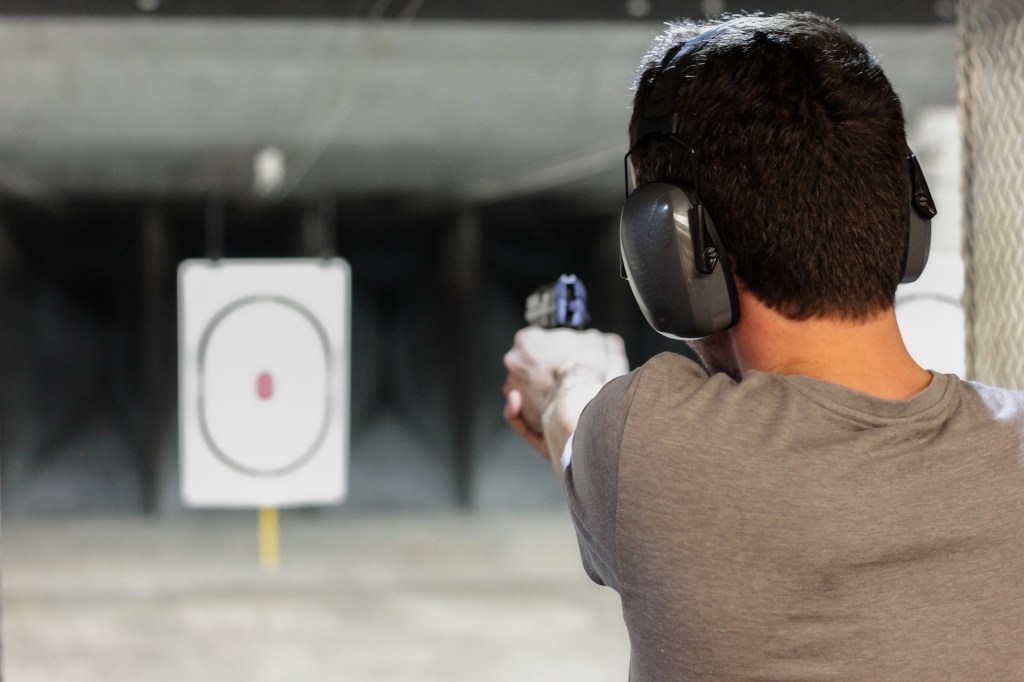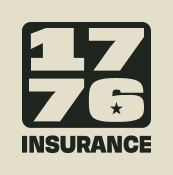Range Safety Rules: Essential Guidelines for Safe Gun Use
Shooting at a gun range can be a fun and exciting experience! You get the opportunity to put your guns to use and to practice your aim and shooting technique. However, gun ranges also require a high degree of safety. Safety rules are put in place to protect you and other shooters from being injured at the range.
If you are planning on going to a gun range, it’s important to be aware of the correct etiquette and safety rules, and to follow all of them. Read on as we discuss basic firearm safety rules, proper gun handling, and etiquette that you should follow while visiting a gun range.

Basic Gun Safety Rules
To stay safe on the shooting range, follow these essential shooting safety rules:
Keep the Gun Pointed in a Safe Direction
This basic safety rule is very important – always keep your gun pointed in a safe direction. Never point your gun at something that you don’t want to shoot. This protects you and the people and objects around you in the event of an accidental discharge. Always be aware of where your gun’s muzzle is pointed!
Keep Firearms Unloaded When Not in Use
You should only load your firearms if they are ready to shoot. When they aren’t being used, store your firearms separately from your ammunition for maximum safety. As soon as you are finished using your gun, you should unload it. Never assume that your gun is unloaded – always check it out yourself, and don’t take someone else’s word for it!
Treat Every Gun as if it’s Loaded
Always act as though you are holding a loaded firearm. Even if you are sure that your gun is unloaded, you should always treat it as though it is. Don’t point your unloaded gun at anything you don’t want to shoot, and don’t be reckless with how you handle your firearm.
Don’t Rely on the Safety
Even if you think your gun’s safety is one, don’t assume that it is. This mechanical device is subject to failure just like anything else. Also, the safety might be off when you believe it to be on. Never make an assumption about this!
Keep Your Finger Off the Trigger Until Ready to Shoot
Don’t put your finger on the trigger of your weapon unless you are ready to fire. This prevents you from accidentally firing your gun when you aren’t ready.
Know Your Target and What’s Beyond It
Don’t shoot your gun until you know exactly what your bullet is going to hit. Don’t fire at any movement or noise – this can cause accidents. Take your time to see your target and be aware of what you are shooting at.
Use the Right Ammunition
It’s your responsibility to use the correct ammunition for your firearm. Read your gun’s manual and be sure that you know exactly what type of ammunition your weapon requires. Not only can using the incorrect ammo wreck your gun, but it can also cause a serious accident.
Always Wear Eye and Ear Protection
The loud noises that occur at a firing range can damage your ears, and debris from shooting at objects can be damaging to eyes. Be sure to wear the proper ear and eye protection when shooting, to keep yourself safe.
Service Your Guns Regularly
Be sure to clean your weapon according to the manual instructions on a regular basis to keep it in working order.
Don’t Modify Your Gun
Making alterations or changes to your gun can make the weapon more dangerous. Don’t make alterations or repairs yourself – be sure to go to a qualified person who knows what they are doing.
Be Familiar With Your Gun
All guns handle differently. Being used to your gun can help promote it’s safe handling. Be sure to read your manual to familiarize yourself with your gun’s workings, and handle your weapon with care.

Must-Have Gun Range Etiquette
Besides the safety rules that you must follow, there is a certain etiquette that should be followed when visiting a gun range. Read on as we discuss some etiquette tips!
Don’t Fire at Posts, Supports, or Target Frames
Damaging these items will force the gun range to replace them, which is expensive and also time-consuming.
Shoot at Range-Approved Targets Only
Check in with your gun range and find out what types of targets they allow you to shoot at. Many ranges allow approved paper, cardboard, or metal and clay targets.
If You Use Target Frames, Return Them Once You are Done
It’s the polite thing to do, and it creates less work for those working at the range.
If Your Range Allows Pets, Keep Them Under Control at All Times
Bringing a pet to a shooting range may not be the safest thing to do. Your pet might panic if they aren’t used to the sound of gunfire.
Leave the Gun Range Better Than You Found It
Clean up after yourself by picking up trash, cleaning your firing station before you leave, and following all of the rules of the gun range you are visiting.
Range-Specific Safety Rules
Your gun range will most likely have specific safety rules that you need to follow. Be sure to familiarize yourself with these rules and follow them carefully. If you aren’t sure about the rules, be sure the ask the Range Safety Officer at your gun range. The Range Safety Officer (RSO) is in charge of overseeing the safety of everyone at the range. They are also available to help deal with any gun malfunctions or emergencies that arise.

FAQs
What are range safety rules?
Range safety rules are rule that are put in place at a gun range for the safety of everyone present. It’s important to know the safety rules and to follow them when you visit the gun range.
Who is responsible for enforcing range safety rules?
The Range Safety Officer (also known as the RSO or Range Master) is in charge of supervising the shooters at a gun range and enforcing the rules and regulations of that particular range.
Sources
https://www.nssf.org/safety/rules-firearms-safety/
https://www.nrafamily.org/content/gun-range-etiquette-2/
https://www.silvercore.ca/blog/what-is-a-range-safety-officer-rso-and-how-do-i-become-one
